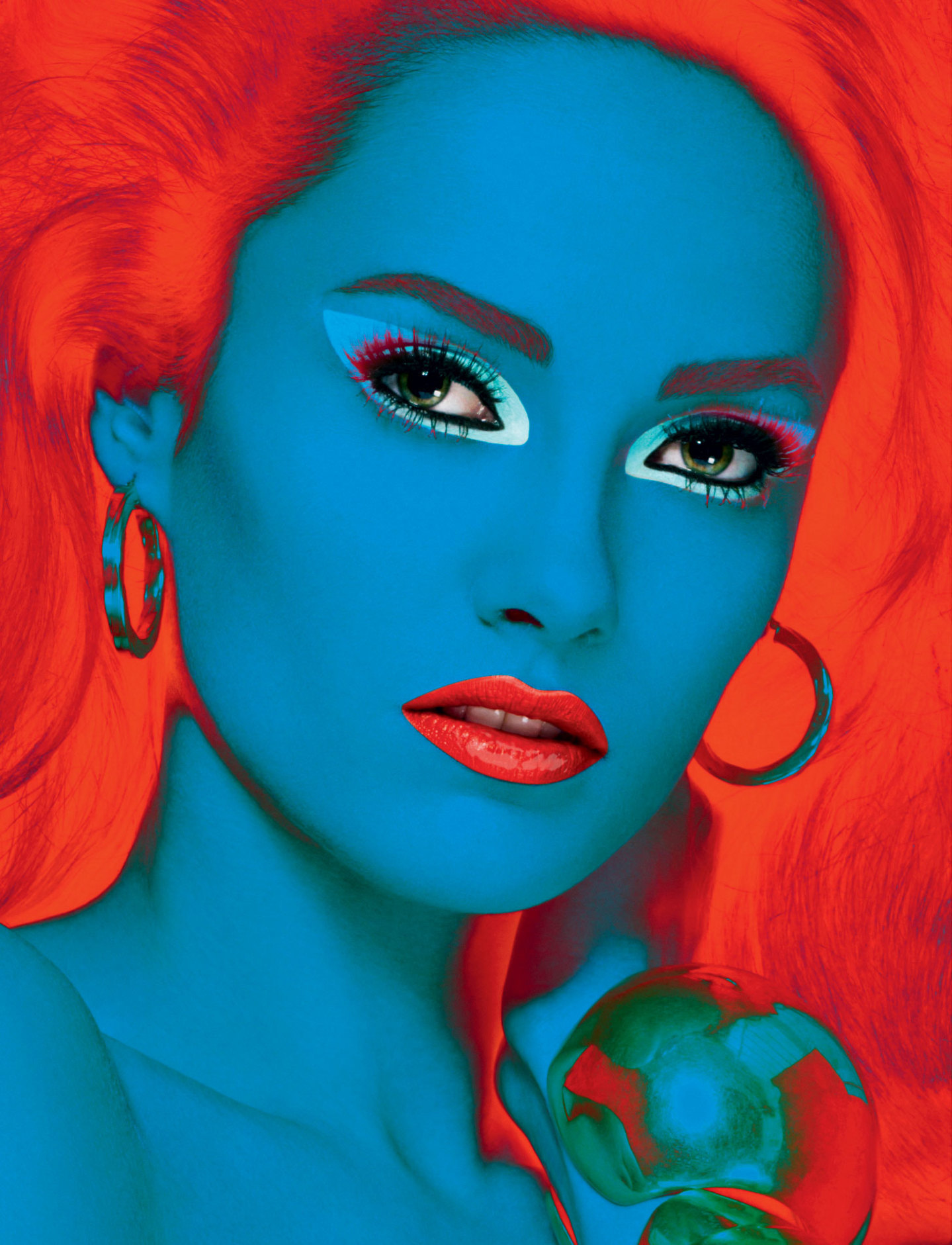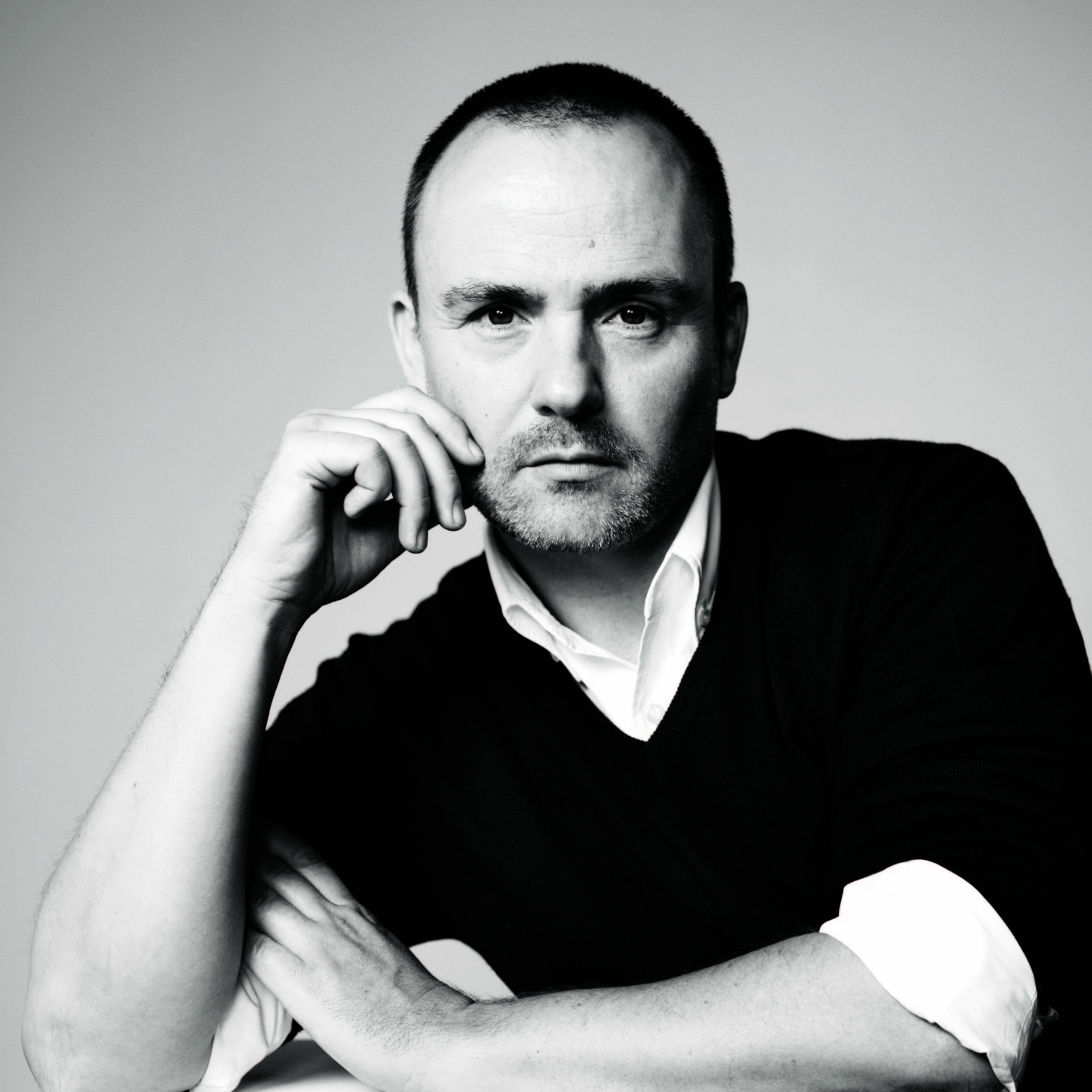Peter Philips, Creative and Image Director of Christian Dior Make-up, has been giving good face for the last two decades and re-defining the beauty industry in the process. From deciding on microscopic elements in new products for Dior to creating campaigns for giant billboards that alight the capitals of the world, his work is at once in the details and writ large across the globe. Though unlike many fashion mega-stars, he remains humble and just as kind as when he picked up his first brush. Peter studied fashion design at the Royal Academy of Fine Arts in Antwerp before turning his hand to make-up on shoots with friends like Willy Vanderperre and Olivier Rizzo, with whom he still works. His work runs the gamut from the unforgettable Penn sittings in American Vogue (Lisa Cant as the chicest Minnie Mouse you’ll ever see), to the exaggerated, rubbery lips in McQueen’s controversial Fall 2009 New Look parody show, to the delicate lace etchings on a male face for i-D’s 2010 Celebration Issue. During a period at Chanel, he created sensational products like the sold-out Jade nail polish in ’09 and temporary tattoos for Spring ’10. But perhaps most importantly it is his longstanding relationship with Raf Simons that speaks to his fortitude and talent, as both find themselves at the pinnacle of the fashion and beauty industries, creating the modern and compelling face of the Dior which will evolve again in a few weeks at the Spring 2015 show. Below are his musings on what is beautiful, the evolving behemoth of the beauty industry, and advice for upstarts.
You have created some of the most iconic ‘faces’ photographed in the last few decades. Do you ever have a sense while you are working how memorable they will be? Like your work with Penn in Vogue, is it obvious while you’re doing it?
With some images you know during the shoot that they are special. I always try to do the best I can to deliver a high standard. But, there are those moments when the stars are aligned and everything seems to fit together like a puzzle, and a great image appears.
What word would sum up the ethos of the work you do most succinctly?
Teamwork. It might not be the most poetic word, but whatever context I’m working in, creating products, creating looks for shows or shooting, I’m always part of a team. In our craft you need to be a good team worker.
What do you look forward to each fashion season as it approaches? Is it excitement, nerves, or even a bit of dread?
It’s mainly excitement and curiosity.
You’ve been so closely identified with the brands you’ve been with. How do you begin and evolve that process of definition as far as the beauty / face is concerned?
My main guideline is beauty and fashion are something I use to ‘spice up’ or ‘dress up’ this universe of beauty. And, this helps give a recognisable identity the House I’m creating for.

What is the most satisfying part of your work? The most challenging?
The whole package makes it very exciting. Being able to be involved in every single aspect of the process (creation, production, communication…) makes my job super exciting
What advice would you give to anyone who is just beginning as a make-up artist?
Make sure you love the job for the right reasons and make sure to stand out for the right reasons.
Any colourful stories of a challenging set or show that you thought would be a disaster but ended Quite the opposite?
My first ever own show in Paris was Veronique Branquinho’s Paris’ debut. The make-up look was a very pure, fragile face, luminous skin, working with matte highlights, no mascara, no lipstick. A delicate look. In contrast with that, we wanted to bring a disturbing hardness to the look. Something that didn’t jump out, but that added a strangeness to the look. So, I blackened the girls teeth, and they were supposed to walk with their heads up and mouths slightly open. One wouldn’t see the blackened teeth, but an emptiness. Once the girls were lined up, they, off course chatted and laughed, which was a horrible sight, they all looked toothless. So, for a moment I panicked, being afraid that some girls would start laughing on the catwalk. They luckily kept a straight face and all went well. After the show we provided each girl with makeup remover, cottons and a toothbrush.
What do you feel like is your most important contribution in the creation of an image as an artist working with other artists?
It’s never a one way street. It’s always teamwork, where every player has his own important part to play. It’s about knowing when and how much to give and when to step back.
How have you seen the industry change since you began?
It’s been changing radically. It always has been a business, but it’s become a huge business, with all the pros and cons that come with it.
Credits
Text Christopher Barnard
Photography Willy Vanderpere
